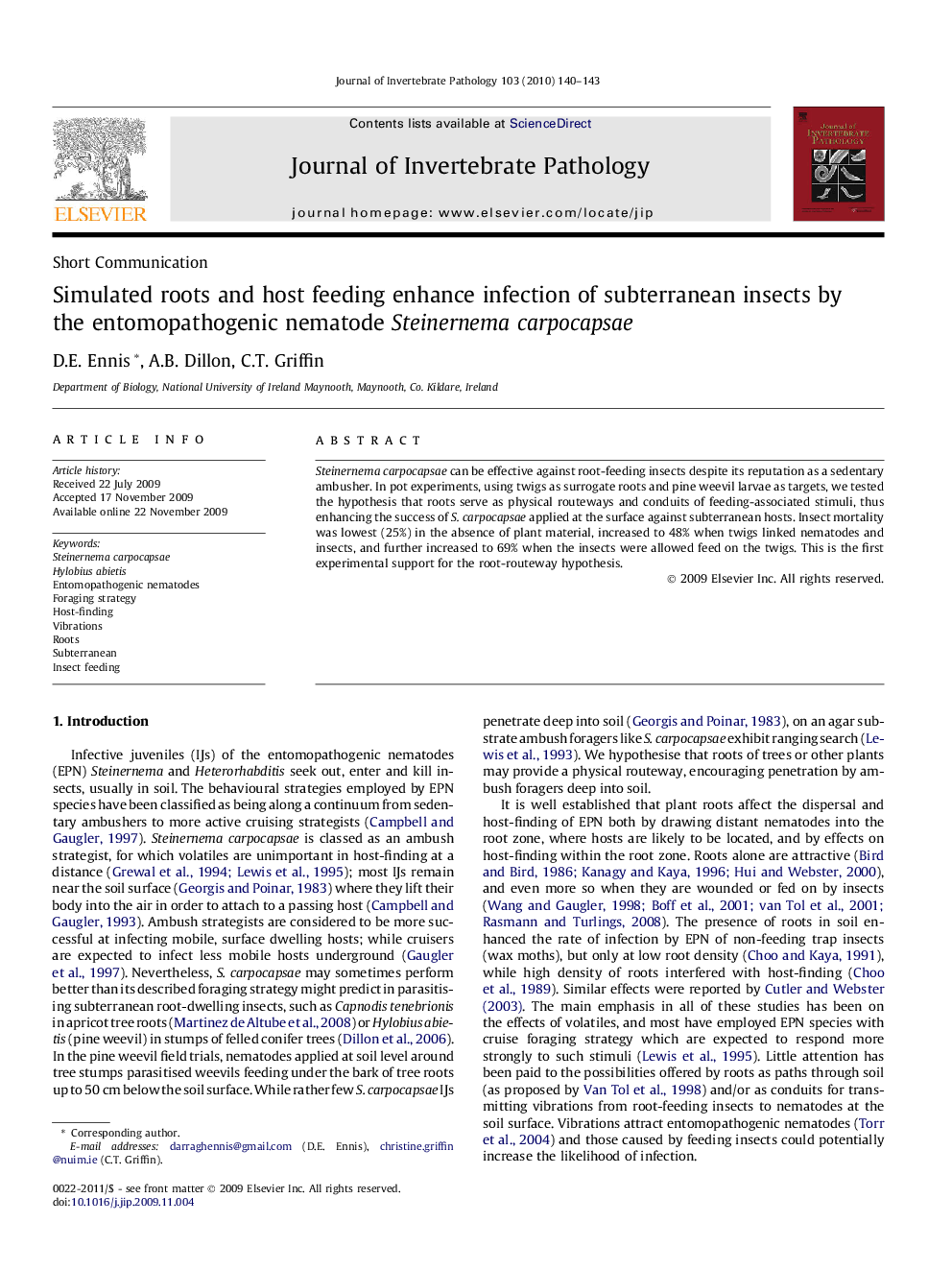| Article ID | Journal | Published Year | Pages | File Type |
|---|---|---|---|---|
| 4558338 | Journal of Invertebrate Pathology | 2010 | 4 Pages |
Abstract
Steinernema carpocapsae can be effective against root-feeding insects despite its reputation as a sedentary ambusher. In pot experiments, using twigs as surrogate roots and pine weevil larvae as targets, we tested the hypothesis that roots serve as physical routeways and conduits of feeding-associated stimuli, thus enhancing the success of S. carpocapsae applied at the surface against subterranean hosts. Insect mortality was lowest (25%) in the absence of plant material, increased to 48% when twigs linked nematodes and insects, and further increased to 69% when the insects were allowed feed on the twigs. This is the first experimental support for the root-routeway hypothesis.
Keywords
Related Topics
Life Sciences
Agricultural and Biological Sciences
Ecology, Evolution, Behavior and Systematics
Authors
D.E. Ennis, A.B. Dillon, C.T. Griffin,
